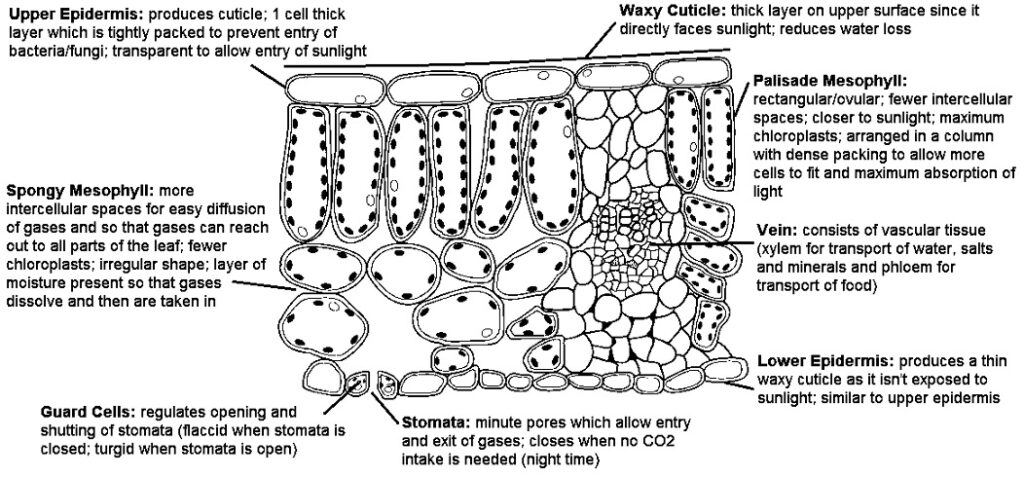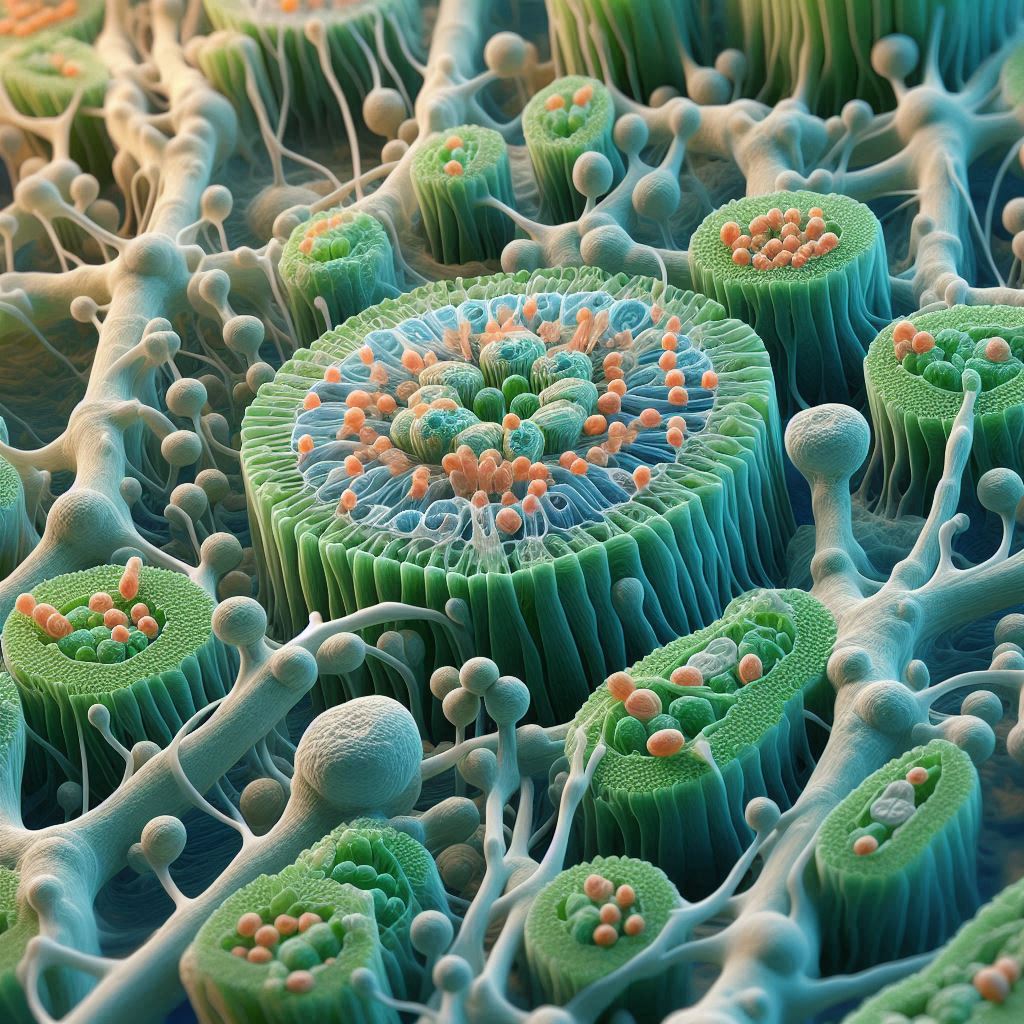What is Photosynthesis?
Photosynthesis is the anabolic process by which plants manufacture carbohydrates from raw materials using energy from light. This requires enzymes and the presence of chlorophyll as well.

The chlorophyll is the green pigment in a plant cell that transfers light energy into chemical energy (ATP) in molecules, for the synthesis of carbohydrates.
Byproducts of Photosynthesis
Glucose (stored as starch):
- Used to release energy by respiration
- Used to make complex compounds in the plant
- Cellulose for the cell wall
- Converted to fats for lipoprotein cell membrane
- Polymerisation: converted to insoluble starch and is stored
- Converted to sugars (sucrose/fructose) and is stored in fruits
- Converted to proteins (by combining with Nitrogen and Sulfur) to produce enzymes, hormones, lipoprotein and for growth
Oxygen:
- Only little is kept for respiration
- The rest is released as it is a waste product of this reaction
Life is Dependent on Photosynthesis
Plants are the only organisms that can produce food (they are known as primary producers). All other organisms are directly or indirectly consuming glucose from plants. Oxygen produced is a requirement for aerobic respiration.
Testing a Leaf for Starch
The Procedure:
- Place the leaf in boiling water to break open the partially permeable cell membrane and cellulose cell wall. This stops enzyme action as well. This will allow ethanol to enter the leaf.
- The leaf shall be then heated in ethanol in a boiling tube, over a water bath. This will decolorise the leaf as the chlorophyll dissolves in the ethanol.
- Place the leaf in cool water briefly so that the brittle leaf softens and allows iodine to penetrate.
- Place the leaf on a white ceramic tile and then iodine shall be poured.
Results:
- Starch is present: leaf will turn blue-black.
- Starch is absent: leaf stays brown (iodine colour)
Testing for the Requirement of CO2
| Test | Result |
| Experimental Setup | |
| Place airtight plastic bag around plant. Place soda lime as well. | No photosynthesis as CO2 absorbed by soda lime. Negative starch test: remains brown. |
| Control Setup | |
| Place airtight plastic bag around plant. Place sodium hydrogen-carbonate as well. | Photosynthesis happens as CO2 is produced by sodium hydrogen-carbonate. Positive starch test: turns blue-black |
Testing for the Requirement of Light
| Test | Result |
| Experimental Setup | |
| Cover a leaf with a dark paper or aluminium foil. | No photosynthesis as no light is available Negative starch test: remains brown. |
| Control Setup | |
| Cover a leaf in plastic. | Photosynthesis happens as light is available. Positive starch test: turns blue-black |
Testing for the Requirement of Chlorophyll
| Test | Result |
| Use variegated leaf (leaves with different pigments; not all parts have chlorophyll) and give it regular conditions. | Positive starch test for all green parts of leaf. Negative starch test for all other coloured parts of leaf. |
Destarching!
Before any of the above experiments can be carried out, the plant must be placed in a dark room so that starch is used up or sent to the roots for storage. This is done so that previous stored starch in the leaves aren’t there while carrying out the experiment. The leaf is now destarched.
Proving the Production of Oxygen
In this experiment, the water level in the measuring cylinder will keep on decreasing as time goes by as the O2 produced by photosynthesis bubbles up to the top and pushes the water down. The water will exit the funnel as it is raised so that space is available for the exit of water.

This setup can be used to check the rate of photosynthesis with respect to several factors, including light intensity and temperature. The measuring cylinder is used to measure the amount of oxygen produced.

Photosynthesis during Day and Night
- Between sunset and sunrise, there is no photosynthesis that is taking place and the plant only respires at a constant rate. This is because light in unavailable.
- During the day, as the light intensity increases, the rate of photosynthesis increases to such a high point, that the rate of respiration seems negligible.
- The time at which rate of photosynthesis is equal to rate of respiration is known as the compensation point. At this moment there is no net uptake of O2 and CO2 as the O2 produced by photosynthesis is used for respiration and the CO2 produced by respiration is used for photosynthesis. The glucose produced is also equal to the glucose used.
Features of the Leaf
In order to photosynthesize efficiently, a leaf needs:
- a method of gas exchange between the leaf and the surroundings (stomata)
- a way of delivering water to the leaf (xylem)
- a system for the removal of glucose (actually sucrose) for transport (phloem)
- an efficient means of absorbing light energy (chlorophyll)
Factors Affecting Photosynthesis
- Light availability/intensity: more light intensity = more photosynthesis
- Supply of CO2 and H2O: more concentration = more photosynthesis
- Suitable temperature (for enzymes to work): higher temperature till optimum = more photosynthesis.
- Presence of pigment to absorb light: chlorophyll (Mg needed to produce this)
The first 3 factors are known as limiting factors as a short supply of any will cause the rate of photosynthesis to be less than maximum rate.
A limiting factor is something present in the environment in such short supply that it restricts life processes.

Leaf Structure Diagram







